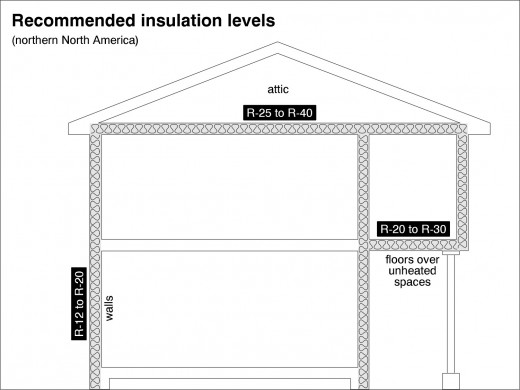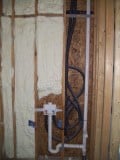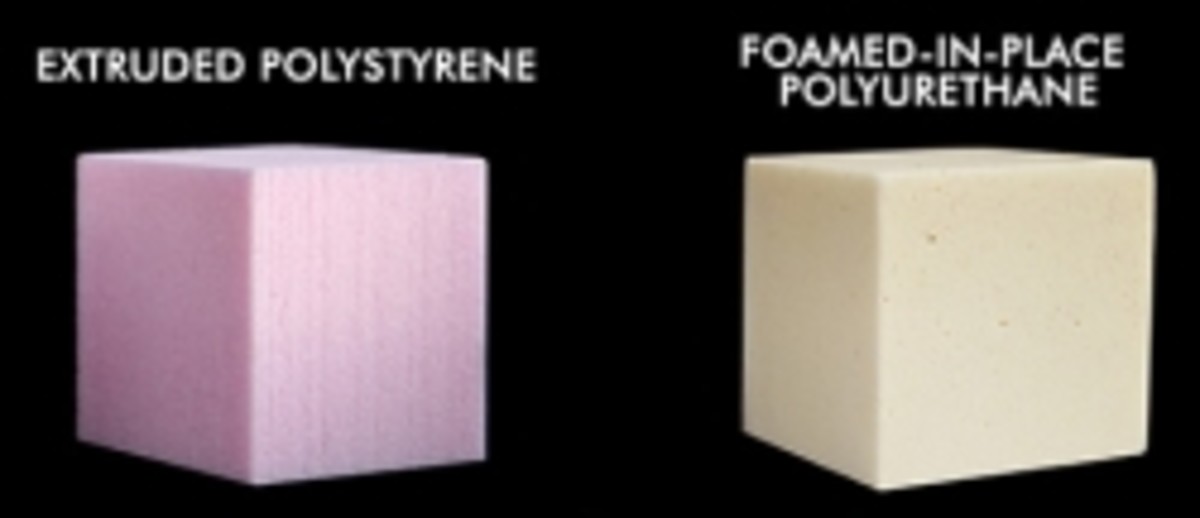How Much Insulation Should I Have in My House?

R-value has been the cornerstone of judging a homes efficiency. There are air infiltration measures that are taken, but should not be with certain kinds of insulation. Along with the above chart, we will go through the best way to insulate a house.
Attics
This is where most people stick their money. The best insulation product for this area is blow in cellulose insulation because of it's amazing drying ability. Cellulose moves moisture from high to low concentration allowing excess moisture to escape into the air. Cellulose is also a great air sealer. Cellulose insulation is R-3.8 and an R-40 is recommended. FIBERGLASS SHOULD NEVER BE USED IN ATTICS.
Walls
Cellulose insulation is the best choice for existing homes because you can simply take a strip of siding off, drill holes, and dense pack cellulose into the wall cavities. The material is the insulator and because it is packed in the cavity tightly, there is no air movement. This cuts down on energy usage along with moisture issues. This method can also be performed on new homes as well.
Box Sills
The area in the basement where the floor joists rest on the sill plate around the perimeter of a house is called the box sills. The best insulation for this area is closed cell spray foam insulation. This keeps air out, while insulation the cavity. R-13 to R-19 is recommended. FIBERGLASS SHOULD NEVER BE USED TO INSULATE THE BOX SILLS.
Floor
When you insulate a floor above an unheated space, the R-value should be treated as an attic space. The diagram shows the UBC recommendations, but treating this space as anyting less than R-35 would yield improper results. Either dense pack cellulose can be used in this case, spray foam insulation, or a combination of 3 inches of spray foam insulation and either fiberglass and cellulose insulation.
Using these insulation guidelines in your home will create a healthy and efficient home environment while avoiding all of the moisture problemes associated with lesser insulation materials year after year.






